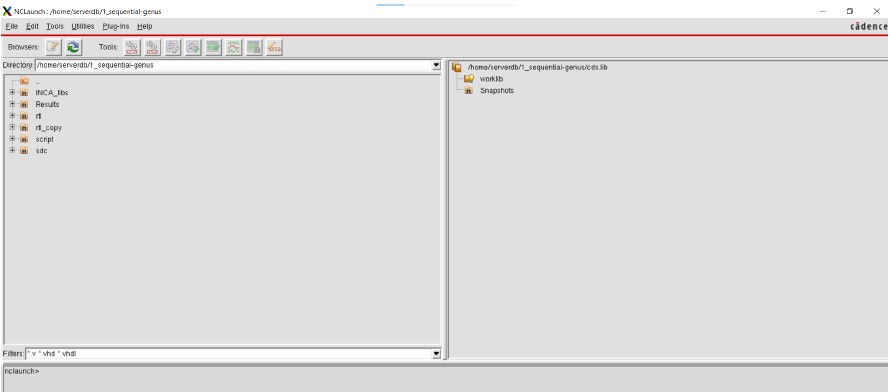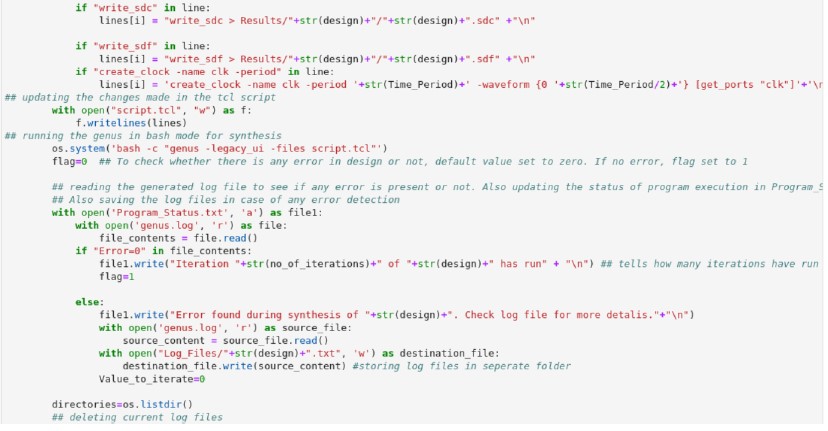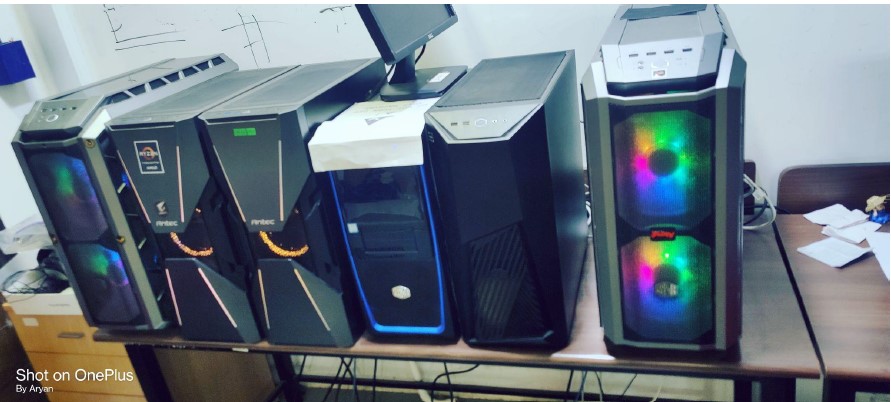The Circuitry of Life: My Journey at the NanoDC Lab
Greetings! Today, I would like to share with you my experience at the NanoDC lab. First, let me give you a brief introduction to the lab. The NanoDC lab is a highly competitive research lab located in Academic Block 5(5/207) at IITGN. It is co-owned by four esteemed professors: Prof Nihar Ranjan Mohapatra, Prof Joycee Mekie, Prof Tarun Agarwal, and Prof Jhuma Saha. The lab conducts research on a broad spectrum of topics ranging from Semiconductor Devices to Circuits to Architectures. Now, let’s delve into my journey at the NanoDC lab.
From childhood, I was never actively involved in technology. The only reason I cleared JEE and came into IIT was my love for math and physics. Since I am from the 2020 batch, our first three semesters happened online. Since I am an introvert, I didn’t interact much with my seniors and batch mates. Due to this, I didn’t explore coding, ML or other interesting subjects partially due to my lack of interest and because of the fact that I thought that what’s taught in the lectures would be enough for me. Time passed on and our first year went by. In the third semester, I took a course “Digital Systems” offered by Prof Joycee Mekie.This course was literally the turning point in my life at IITGN. The course covers basic concepts of hardware and digital processors. I fell in love with the course particularly because of the way Prof Joycee Mekie taught us. I scored the highest marks in this course. Still after the course, I hadn’t decided what I wanted to do in my life. Then the fourth semester happened and I came to college. It was the first offline semester and the first semester where I had to choose an additional course. I was confused since I didn’t really know at that point of time what my interests were. I decided to take a project under Prof Joycee Mekie. It was regarding Hardware Accelerators for ML Applications. However, I was the only student taking this project and because of lack of confidence in my abilities that I won’t be able to complete the project, I dropped it and instead took Computer Architecture and Organization. Fourth semester passed and now it was the time for a 2nd year summer internship. Still, I was clueless about my academic interests. I decided that I would do extensive coding that summer to prepare myself for the 3rd summer intern interviews. One fine day, I saw a poster on a notice board in the Academic Area where there was an advertisement regarding the SRIP(Summer Research Internship Program) offered at IITGN. I decided to apply for it since they were giving a stipend of 16K per month. Fortunately, I got selected into it and my project was the same project which I didn’t take last semester, Hardware accelerators under Professor Joycee. But this time, I was determined to see it through.
Over the summer, I engaged in reading diverse research papers, brainstorming innovative concepts, collaborating with fellow lab members, and developed an interest in a subject beyond the scope of my academic coursework.
During my internship, I worked with Cadence Genus, a software application used to synthesize RTL designs into a standard cell based netlist provided by foundry, such as UMC 65nm, to calculate the hardware’s frequency, area, power consumption, and check for timing violations. At the time, I was not familiar with the tool’s operation as I mostly ran the provided tcl script for our verilog modules.
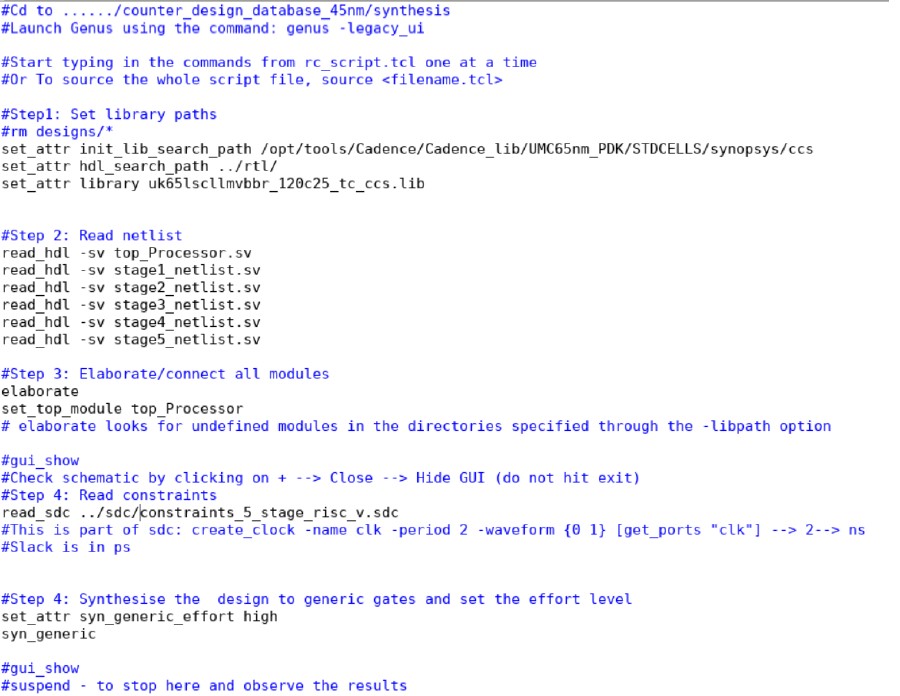
Figure 1. Tcl script used to run Genus
Nonetheless, the internship was an enriching experience that resulted in my publication of a research paper at a prominent VLSI conference, ASP-DAC, during my second year of study.The internship experience helped me realize my passion for pursuing a career in VLSI. In my fifth semester, I had 25 required credits, but as I had decided to pursue a career in semiconductors, I was eager to take a six-level course on VLSI Design offered by Prof. Joycee. Despite the maximum number of credits per semester being 28, I managed to convince my FA to allow me to take 29 credits. This led to a hectic yet rewarding semester, where I was introduced to various tools used in the lab, including my personal favorite, Cadence Virtuoso.

Figure 2. UI of Cadence Virtuoso
The Cadence Virtuoso is a versatile tool that enables the creation of circuits from scratch at a transistor level, layout designs for these circuits, and simulation of pre-layout and post-layout for all pvt corners. During the VLSI Design course, I extensively studied this tool as it is widely used in the lab. For the course project, I opted for an SRAM PUF design, which required testing the reliability, uniqueness, and randomness of the PUF. To do this, I utilized a script commonly employed in our lab to verify whether a given PUF satisfies all NIST tests. This script is widely used in the lab to evaluate PUF performance. At the end of the fifth semester, I became an expert in using Virtuoso.

Figure 3. PUF Script used to evaluate the performance of PUF
Presently, in my sixth semester, I am enrolled in a course called IC Design Laboratory, which involves coding hardware in System Verilog. Throughout this course, I am utilizing three distinct tools, namely Vivado, Genus, and NCSim. Vivado is primarily used to implement the hardware on an FPGA, and I have utilized it in numerous assignments and in my current project, where I am implementing a RISC-V
processor.

Figure 4. Start UI of Xilinx Vivado
During the IC Design Laboratory course, I received formal instruction on how to use Genus and gained a better understanding of how to write tcl scripts. In addition to Genus and Vivado, I was introduced to NCSim, a tool primarily utilized for post-synthesis and post-layout simulations in the ASIC flow. Thus far, I am only familiar with these particular tools of the lab, but I am keen to explore other tools such as
Innovus and Tempus in the future.
In conclusion, my experience at the NanoDC lab has been truly enlightening and has played a crucial role in shaping my understanding of the semiconductor industry. The lab has provided me with a platform to gain hands-on experience with state-of-the-art tools such as Cadence Virtuoso, Genus, Vivado, and NCSim, which are widely utilized in the industry. The research projects that I have undertaken have given me a deeper understanding of various aspects of semiconductor design and have helped me develop critical skills that are essential for success in this field. Furthermore, the support and guidance provided by the lab’s faculty members especially by Kailash Prasad, Yaswanth Ram and Alok Pradhan have been instrumental in my growth and development. The lab is home to some of the most accomplished professors in the field of semiconductors, and their expertise has been invaluable in my journey so far. Overall, I am immensely grateful for the opportunity to be a part of the NanoDC lab and look forward to continued learning and growth in the year to come.
Some Projects Completed Using These Tools
Figure 6. Schematic of a 6T SRAM Bit Cell
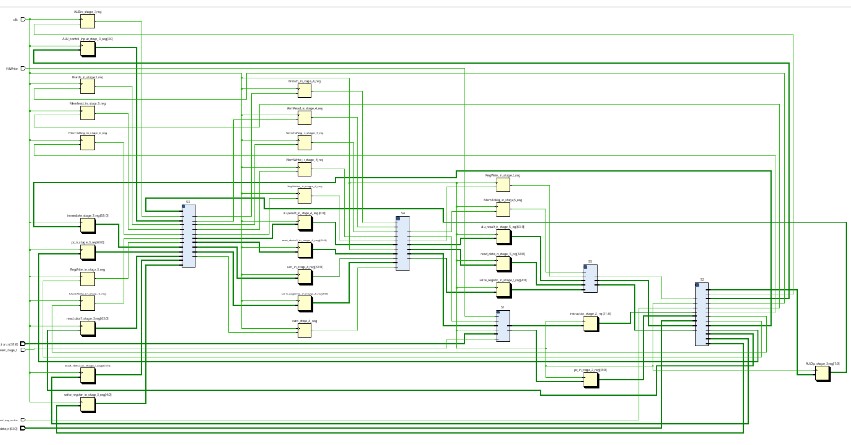
Figure 7. RTL Schematic of RISC-V Generated using Vivado
Figure 8. Python Script to Automate the process of Genus Synthesis
Other Miscellaneous Places of the Lab
Figure 9. A Wall of NanoDC Lab with research posters
At the NanoDC lab, there is a wall covered with research posters, displaying the latest work and findings of the lab members. Every time I enter the lab, this wall catches my attention and inspires me to dive deeper into the world of research. The posters, with their colorful illustrations and intriguing titles, make me curious and motivated to learn more about the specific research areas. Looking at these posters, I
realize the immense amount of work and dedication that goes into conducting research. It reminds me of the endless possibilities and opportunities that await us in the field of semiconductor research. The posters showcase a diverse range of topics, including novel device designs, circuit architectures, and verification techniques. They also demonstrate the interdisciplinary nature of research, as many posters involve collaborations with researchers from different fields.The wall of research posters at the NanoDC lab serves as a reminder to me that research is a continuous and evolving process. It encourages me to keep pushing my limits and exploring new areas of interest. Whenever I feel stuck or overwhelmed with a particular project, I take a moment to stand in front of this wall and gain some inspiration from the
remarkable work displayed.
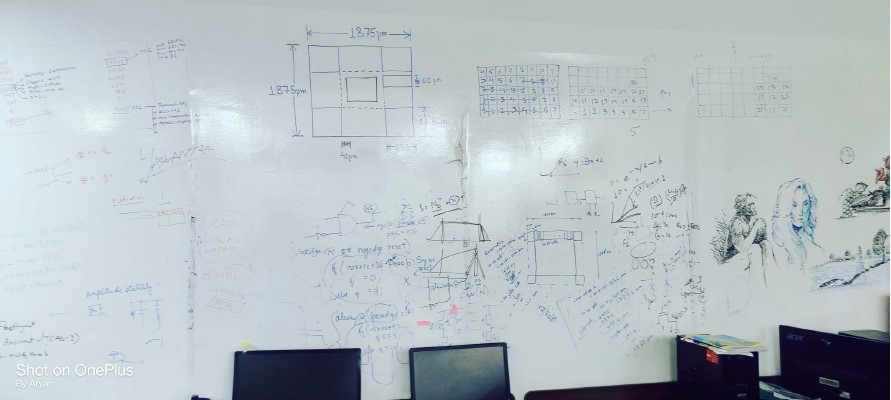
Figure 10. Discussion wall at NanoDC Lab
At the NanoDC lab, there is a unique wall where people often gather to have discussions and brainstorm ideas. This wall is adorned with beautiful illustrations and artwork that serve to inspire and stimulate creativity. The artwork is a combination of various colors, shapes, and patterns, making it a visually appealing space that stands out from the rest of the lab.What I find most fascinating about this wall is that it serves as a physical representation of the creative and collaborative culture that is fostered within the lab. It is a place where people come together to share their thoughts and ideas, and the illustrations on the wall serve to inspire and spark new ideas. Personally, I find this wall to be a source of inspiration and motivation. Whenever I am stuck in my work or need a break, I often find myself drawn to this wall. I spend some time admiring the artwork, which helps me to clear my mind and gain a fresh perspective. The conversations and discussions that take place in front of this wall are always insightful and thought-provoking, and I feel fortunate to be a part of such a vibrant and collaborative community.
Figure 11. CPU desk at the lab
One of the most fascinating areas in the NanoDC lab is the desk where all the CPUs of the lab are kept. It’s a great sight to see so many different processors in one place. However, one particular CPU always catches my attention. It has an RGB display that changes colors every few seconds, making it a visually captivating device. Whenever I pass by the desk, I can’t help but glance at it and appreciate its unique design. It’s a reminder of how much innovation and creativity goes into the design of modern CPUs, and it motivates me to keep learning more about this field.



